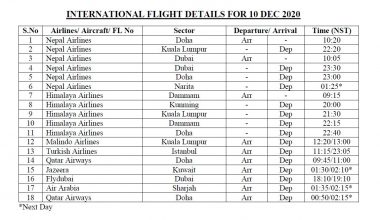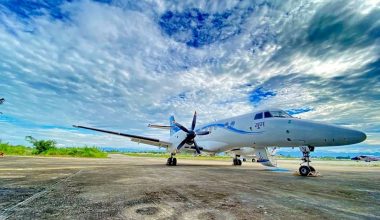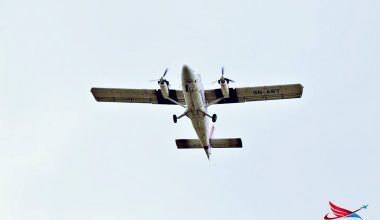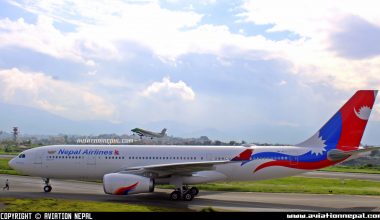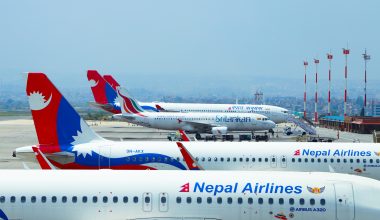General aviation in Nepal started in 1949 AD. To this point, Nepal has about 71 years of Aviation experience. In this term, numerous good things occurred and so terrible things. In the history of aviation in Nepal, there was two planes hijacked, which is explained below.
1973 Nepal Aircraft Hijack
The 1973 Nepal aircraft hijacking, also known as the Biratnagar plane Hijack, became the first plane hijacking within Aviation’s history in Nepal. It was masterminded through Girija Prasad Koirala, who would later be elected the Prime minister of Nepal, to loot the money of Nepal Rastra bank being carried by aircraft from Biratnagar Kathmandu.
The incident occurred on June 10, 1973. Nepal Rastra Bank was transporting Indian currency notes from Arrariya, India to Kathmandu through Biratnagar. It was transported to Biratnagar by land and was supposed to be taken to Kathmandu by air. At 8:30 NPT, the nineteen-seater Royal Nepal airlines twin Otter passenger plane took off for Kathmandu from Biratnagar. The three hijackers hijacked the plane within 5 mins of takeoff. They compelled the pilot to land the plane in Forbesganj, Bihar, in a grass field and took 30 lakhs of Indian rupees that belonged to the Nepalese government. There were a total of 3 crew and 19 passengers inside the aircraft. It was mentioned the hijackers used two 32 revolvers and one grenade bomb, and no passengers were harmed.
The hijackers who boarded the aircraft were Basanta Bhattarai, Durga Subedi, and Nagendra Prasad Dhungel. Girija Prasad Koirala and Chakra Prasad Banstola were involved in transporting the loot to Darjeeling and hiding it within the residence of B. L. Sharma, an acquaintance of BP Koirala. Ganesh Sharma, an Indian countrywide, had pushed a jeep to the landing site. Different members involved in the field in Forbesganj were Binod Aryal, Sushil Koirala, Manahari Baral, Rajendra Dahal, and Biru Lama. Three different vehicles were used in transporting the three containers of cash to Darjeeling.
The plane took off straight away with the passengers after the boxes of cash were taken out. The hijackers went to Darjeeling and then to Banaras and Mumbai. They occasionally made journeys to New Delhi to meet BP Koirala, the then President of Nepali Congress. However, within a year, the hijackers were arrested in India besides Nagendra Dhungel. After the 1975 Emergency in India ended, they were released on bail. It was said that the cash, intended for use in the struggle for democracy, was misused. BP Koirala himself, suspected that the money was misused.
Indian Airlines Flight 814 Hijack
The Indian airline’s Flight 814, commonly known as IC 814, was the first international hijack of Nepal. The flight was operated with Airbus 300 from Tribhuvan International Airport to Indira Gandhi International Airport. On December 24, 1999, the incident began when it was hijacked and flown to several locations before landing in Kandahar, Afghanistan, on December 31, 1999, on-demand of releasing some prisoners.
The flight left with 180 passengers on board, including the crew, the passengers, and five hijackers. The plane was piloted by 37-year-old Captain Devi Sharan and first officer Rajinder Kumar, with 58-year-old flight engineer Anil Kumar Jaggia. The Airbus was hijacked by five masked gunmen shortly after it entered Indian airspace at about 17:30 IST. The five hijackers all had code names: manager, Shankar, Bhola, Burger, and doctor.
The hijackers told Captain Devi Sharan to “fly west,” Accordingly, the flight entered Pakistani air space; however, he was refused permission to land in Lahore, Pakistan, by Pakistani Air traffic control. On being instructed that there was insufficient fuel to go further, the hijackers allowed Captain Sharan to land the flight in Amritsar, Punjab, to refuel.
At 6:44 pm, flight IC 814 started out descent over the closest airport in Amritsar, following a message from Captain Sharan, and was approached by local officers. On landing, IC 814 requested immediate refueling for the plane. Between landing and takeoff again at 7:50 pm, Captain Sharan contacted the ATC four times, informing them that the hijackers had been armed with Kalashnikov rifles and had begun killing hostages, and requested them to refuel the plane as fast as possible to prevent any extra deaths. The hijackers had refused to communicate with nearby police officials simultaneously as the aircraft was in Amritsar. Later the hijackers, who were upset by the delay in refueling, attacked Satnam Singh with a knife, causing him several wounds to the neck. The aircraft did not refuel at Amritsar as there were three army tanks at the airport, and hijackers told the captain the takeoff the plane immediately after the landing.
The plane left Amritsar at 7:49 pm, and Captain Sharan announced the departure to the ATC, stating, “We are all dying.” Commandos from the Indian Special Forces unit, the national security guard, arrived at the airport just as IC 814 departed.
On approaching Lahore, Pakistan, Flight IC 814 requested permission to land and was denied through Pakistani ATC, which turned off all lights and navigational aids on the airport to prevent a landing. Captain Sharan attempted to crash-land without navigational aids and lighting, almost landing on a highway. Following this, Pakistani ATC turned on navigational aids and allowed the plane to land in Lahore at 8:07 pm.
Pakistani forces turned off runway lighting fixtures to prevent the plane from departing after refueling and surrounded the plane with special forces commandos. They also tried to negotiate with the hijackers to launch women and children aboard the flight but were denied.
The plane took off for Dubai, in which 27 passengers aboard the flight were released. The hijackers also released a seriously injured 25-year-old male hostage, Rupin Katyal, who had been stabbed by the hijackers multiple times.
After the aircraft landed in Kandahar, Afghanistan, which was under the control of the Taliban, Taliban fighters took offensive positions across the aircraft. Taliban authorities provided to mediate between India and the hijackers, which India believed initially. Since India did not recognize the Taliban regime, it dispatched an official from its high commission in Islamabad to Kandahar. The Taliban maintained that the forces were deployed to dissuade the hijackers from killing or injuring the hostages; however, some analysts agree that it was done to prevent an Indian military operation towards the hijackers.
Negotiations did not progress, as Taliban officials initially refused to allow Indian Special Forces to attempt a covert operation and declined to permit their special forces to do so as well. To prevent any military action, Taliban officials surrounded the aircraft with tanks, and on December 27, a Taliban official speaking to a nearby newspaper said that the hijackers should either go away Afghanistan or put down their weapons. Indian officials interpreted this statement to understand that Taliban officials would arrest the hijackers if they surrendered and began to negotiate with them concerning their demands. Those demands included the release of 36 prisoners but were ultimately reduced during negotiations to three prisoners: Maulana Masood Azhar, Ahmed Omar Saeed Sheikh, and Mushtaq Ahmed Zargar. Mushtaq Ahmad Zargar, Maulana Masood Azhar, and Ahmed Omar Saeed Sheikh were released from a Srinagar prison and flown with Sheikh and Azhar Kandaharas per the demand.
By this time, the hostages were released from the aircraft by the hijackers, and the hijackers had also surrendered their weapons. Passenger bills indicated that the hijackers requested the passengers to show their gratitude to the Afghanistan government, following which money was gathered and surpassed to one of the passengers, Anuj Sharma, who was instructed to apply it to commission a memento of the hijacking for a museum in Kandahar.
This incident created chaos and brought a sandstorm in people worldwide. Nepal’s airport security system was criticized all over. The government of Nepal constituted an investigating body after the incident of flight IC 814. The investigation body had inquired all the police officers and airport staff on duty that day. However, no finding has been concluded to date. No one could answer how a group of hijackers were able to board an aircraft with weapons from an international airport.
Subsequent intelligence reports indicated that the hijackers had bought five tickets on the Kathmandu flight; two first-class tickets were bought directly, while three economy seats were bought through a travel agency. Indian intelligence officials believed that Dawood Ibrahim, an Indian mob leader, had supplied assistance in giving the hijackers access to the airport in Kathmandu.

